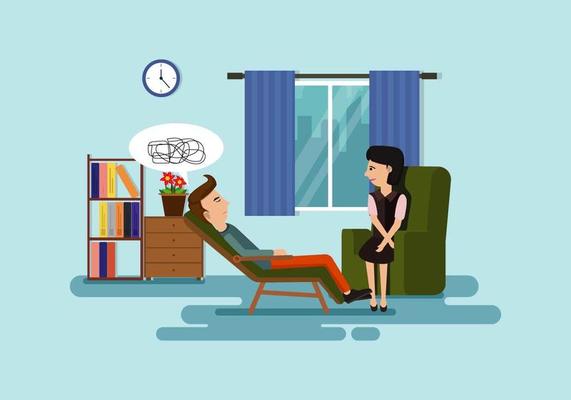What to Expect When Visiting the Best Psychologist in Delhi for Counseling
Psych Treatment: A Comprehensive Overview to Outcomes and strategies

Cognitive-Behavioral Treatment
Cognitive-Behavioral Therapy (CBT) is a widely used psychotherapeutic strategy that concentrates on identifying and customizing useless thinking and behavior patterns. Established in the 1960s by Aaron T. Beck, CBT integrates cognitive and behavioral theories to attend to various mental wellness problems, consisting of depression, anxiety, and stress-related disorders.
Strategies such as cognitive restructuring, direct exposure treatment, and skill-building workouts are commonly used. Cognitive restructuring entails tough and altering unfavorable thought patterns, while exposure treatment intends to lower anxiety and stress and anxiety via progressive direct exposure to been afraid items or situations.
Evidence-based research sustains the efficiency of CBT for a vast array of psychological conditions - Best Psychologist in Delhi. Its emphasis on ability purchase and self-help techniques empowers clients to continue progress independently after therapy wraps up. The flexibility and efficiency of CBT have actually made it a keystone in modern psychotherapeutic practice
Psychodynamic Methods
Rooted in the very early theories of Sigmund Freud, psychodynamic approaches concentrate on exploring the subconscious mind and its influence on habits and emotions. These approaches intend to discover covert ideas and feelings that might be driving maladaptive actions and psychological distress. Central to this approach is the concept of internal problem, typically coming from unsettled past experiences, specifically those from childhood years.
Therapists using psychodynamic techniques utilize several essential methods, including cost-free organization, where individuals are encouraged to talk freely to expose unconscious material, and dream evaluation, which translates the hidden content of dreams. Additionally, the expedition of transference and countertransference dynamics within the restorative relationship is important. These communications can give insights into the individual's internal globe and relational patterns.
Psychodynamic treatment is generally longer-term contrasted to other techniques, offering a deep and comprehensive understanding of the individual's psyche. Research shows that it can be especially reliable for complicated psychological health and wellness issues, such as individuality conditions and chronic depression. By cultivating self-awareness and psychological insight, psychodynamic treatment looks for to bring unconscious material to consciousness, allowing people to achieve long lasting and significant adjustment in their lives.
Humanistic Strategies
Structure on the foundations laid by psychodynamic approaches, humanistic strategies offer a distinctive perspective concentrated on specific prospective and self-actualization. Coming from in the mid-20th century, these strategies focus on the inherent benefits and development possibility of individuals, emphasizing an all natural sight of human experience. Key figures such as Carl Rogers and Abraham Maslow have actually dramatically influenced this restorative technique, which encompasses methods like client-centered treatment and Gestalt therapy.
Client-centered therapy, developed by Rogers, plays a critical function in humanistic methods. The specialist's function is even more of a facilitator than an authority, encouraging customers to harness their inner resources for recovery.
Gestalt treatment, another vital humanistic method, highlights present moment understanding and the assimilation of body and mind. By concentrating on the "here and now," customers get greater insight into their present emotions and habits. Techniques such as role-playing and guided visualization are frequently employed to help customers get a deeper understanding of themselves, inevitably resulting in improved self-awareness and satisfaction.
Integrative Treatments
Integrative treatments represent a synthesis of numerous restorative methods customized to satisfy the one-of-a-kind needs of each client. This strategy recognizes the complexity of human psychology and the complex nature of psychological health concerns. By incorporating components from various schools of psychotherapy-- such as cognitive-behavioral treatment (CBT), psychodynamic treatment, and humanistic techniques-- integrative therapies offer a more alternative and adaptable treatment standard.
Professionals of integrative treatment examine each customer's details demands, signs and symptoms, and individual history to develop a tailored therapy strategy. This individualized technique enhances the capacity for therapeutic success by addressing the origin of psychological distress and advertising overall health. Methods might include mindfulness exercises, cognitive restructuring, and psychological handling, each selected to target various aspects of the client's problems.
Moreover, integrative treatments highlight the therapeutic relationship, seeing the client-therapist bond as an important element of effective therapy. This relationship cultivates a helpful setting Web Site where clients really feel safe to check out and address their issues. The flexibility of integrative treatments makes them appropriate for a wide range of problems, including anxiety, anxiety, trauma, and interpersonal problems, therefore boosting their applicability and performance in varied professional settings.

Measuring Therapy Results
Reviewing the performance of psychotherapy is important for both clients and medical professionals to guarantee that the therapy is producing the desired outcomes. To accomplish this, different methods and devices are utilized to determine therapy outcomes methodically. Standard evaluation tools, such as the Beck Depression Supply (BDI) and the Generalized Stress And Anxiety Disorder 7 (GAD-7), provide quantitative data on symptom intensity and modifications with time.
Along with standard devices, qualitative approaches like client self-reports and scientific interviews supply important insights into the personal experiences and regarded progression of customers. Routinely scheduled evaluations, commonly at the beginning, navel, and end of treatment, aid in tracking the trajectory of a knockout post renovation or identifying areas requiring change.
Result measurement is not restricted to signs and symptom reduction; it also encompasses functional enhancements in everyday life, such as better social connections, enhanced job productivity, and enhanced general well-being. Modern improvements in digital wellness have presented mobile applications and on the internet platforms that assist in real-time tracking and feedback, additionally fine-tuning the evaluation procedure.
Inevitably, a detailed strategy to determining therapy results guarantees that therapeutic treatments are effective, reliable, and tailored to satisfy the individual demands of customers, therefore optimizing the overall healing experience.
Verdict
Humanistic methods focus on individual growth and self-actualization, while integrative treatments incorporate multiple techniques for customized treatment strategies. Reviewing therapy end results via standard analyses and qualitative methods makes certain an extensive understanding of performance, eventually directing customers toward withstanding psychological health enhancements.
From the structured approach of Cognitive-Behavioral Therapy (CBT) to the deep expedition of the unconscious in psychodynamic therapy, each method brings distinct advantages. Its emphasis on skill acquisition and self-help techniques empowers clients to proceed progress separately after therapy concludes (Best Psychologist in Delhi). Trick figures such as Carl Rogers and Abraham Maslow have considerably affected this healing technique, which encompasses approaches like client-centered treatment and Gestalt therapy
